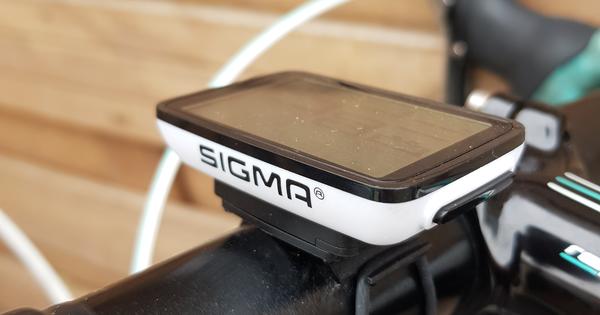An external drive is very handy when you want to store files on a mobile basis. You plug this storage drive into any PC or laptop so that you can access your personal data. Making a choice for a new external drive is quite difficult because of the overwhelming offer. With this article we will help you on your way when choosing an external hard drive, so that you know exactly which specifications to look for.
Tip 01: Format
First of all, the size of the external drive is an important factor. Would you like to take the mobile storage drive with you? In that case, a small housing is of course a big advantage. No problem, because there are all kinds of portable disks available that are fed by the USB port of the computer or smart TV. A compact and energy-efficient 2.5-inch drive is then incorporated into the housing. If you mainly use the external drive in one place, you can also consider a larger one that works on mains power. This contains a 3.5 inch drive. An advantage is that the read and write speed of large disks is usually higher, as more energy is available. The condition is, of course, that there is always a free socket nearby. In addition, external 3.5-inch drives are in most cases relatively cheaper than portable 2.5-inch drives, since you pay a lower amount per gigabyte. In addition to a larger size, also take into account a higher weight.

Tip 02: Storage capacity
Once you have determined the format, determine the desired storage capacity. The more GBs the drive can accommodate, the more money you pay. A large storage capacity is not an unnecessary luxury for the storage of photos and especially videos. You may be able to work with fewer GBs for storing documents. When purchasing an external 2.5-inch drive, you can roughly choose from products with a capacity between 1 and 5 TB. Incidentally, there are also compact storage drives with less than 1 TB of space, although they are becoming increasingly rare. In the case of external 3.5-inch drives, the current offering consists of products with 2 to 10 TB of file storage. Pay attention to this: some manufacturers boast of an external drive of 8 TB, which in reality contains two storage carriers of 4 TB each. This results in a much larger housing. With this duo construction, external drives with more than 10 TB of data storage are also commercially available. Our advice: if you end up with a product with two or more disks, it is best to choose a NAS (see box).

Nas
A NAS can best be described as an external drive with its own operating system. Because this device is connected to the home network with an Ethernet cable, you can access your files with any computer. Ideal for those who want a central and secure storage place for important files at home. Since a NAS can also run applications, this device also offers much more functionality than a regular external drive. For example, you stream media files to a smart TV and automatically save surveillance images from IP cameras. With the more expensive models, you can usually store multiple 3.5-inch drives in the housing.

Tip 03: Disk Speed
A hard disk consists of several rotating layers (platters) that usually rotate at a fixed speed. Manufacturers express this value in rpm (rotations per minute). The RPM is essential for the speed of a 2.5- or 3.5-inch drive. The higher the rotation speed, the less time it takes for the drive to read and store data. Most external 2.5-inch drives have a speed of 5400 rpm. Since 3.5-inch drives have access to more power, they often support a slightly higher rotational speed of 7200 rpm. Pay attention to this, because there are also 3.5-inch drives with a speed of 5400 or 5900 rpm for sale. Although they are more energy-efficient, they also offer a lower read and write speed. The advantage of this is that the disc becomes less hot, which increases the chance of a longer life.
Tip 04: USB standard
You connect the drive via a USB port to the computer. In addition to the speed, the USB standard used also has a lot of influence on the speed performance. The vast majority of products have a USB3.0 connector, whereby a theoretical throughput of 5 Gbit/s is achievable. The latest products have a USB3.1 connection, for which a maximum throughput rate of 10 Gbit/s applies. Keep in mind that you need a suitable USB port on your computer to take advantage of a higher USB standard. Don't be put off if your PC or laptop only contains USB 2.0 ports. You can easily connect a USB3.0 drive to this, although the speed is limited to a maximum of 480 Mbit/s.

Tip 05: USB-c
To make the choice even more difficult, some manufacturers supply a USB cable with a smaller connector. This is a USB-C cable. Of course you can only connect it if your computer has a USB-C connection. An advantage is that this connection type supports the USB3.1 standard, so that you benefit from a higher transfer speed. Always check in the specifications which USB standard is maximum supported, because that can just as easily be USB 2.0 or USB 3.0. Furthermore, unlike the traditional USB-a port, you cannot connect this new USB connection incorrectly. Another advantage is that you can connect the drive directly to a smartphone or tablet, provided the mobile device has a USB-C port. A favorable development is that more and more devices are equipped with a USB-C connection. It is useful to know that the USB-C connector supports other protocols in addition to the USB standard, such as Thunderbolt 3 (see box). You can also use this connector to charge mobile devices, provided the external drive supports this function. Does your computer not have a USB-C? Don't worry, because most external drives come with an adapter cable with which you can still connect the storage drive to a regular USB port.
 More and more devices nowadays contain a modern USB-C connection
More and more devices nowadays contain a modern USB-C connection Thunderbolt 3
Some hard drives support the thunderbolt3 protocol. This standard is best known among owners of a recent Mac or MacBook. It is striking that the protocol uses a USB-C connector. The main spearhead is a higher throughput of up to 40 Gbit/s. In particular, LaCie develops many external drives that support both Thunderbolt 3 and USB-C. Incidentally, this manufacturer also designs products with a Thunderbolt2 connection.

Tip 06: Housing
There is a lot of quality difference in the housing between external hard drives. Cheap products usually have a plastic exterior. You can often dent them, making these discs extra sensitive to fall and impact damage. If you are willing to invest more money, choose one with an aluminum exterior. They can generally take a beating. If you want to take it seriously, there are also external drives with rubber protection for sale. LaCie's Rugged series is a well-known example of this. These products are (splash) water, fall and shock resistant, making them very suitable for outdoor use at a campsite, for example.
Tip 07: Software
Many people use an external drive to keep a backup of their files. Well-known manufacturers such as Toshiba, Western Digital, LaCie and Seagate include special software for this reason to make copies of files. With this you determine, for example, that you want to write a backup to the external drive at a fixed time every day. For example, Western Digital adds Acronis True Image to select products, which allows you to back up the entire system.
Incidentally, it is not mandatory to use the enclosed software. You can also let the external drive work together effortlessly with other backup programs. In addition to backup software, manufacturers also supply a security program with the better disks, so that you can protect the content with a password if desired. Encrypting the data prevents unauthorized access to the files.

Tip 08: External SSD
Is money no object and do you want maximum speed? Then an external SSD (solid state drive) is for you. In contrast to regular 2.5-inch and 3.5-inch drives, such a storage drive does not contain rotating parts to search for the desired files, so that waiting times are negligible. You notice this, for example, when you start an operating system from an SSD, but also when you open a heavy video file, for example. Moreover, because of the lack of moving parts, external SSDs are very durable and hardly make any noise. Another advantage is that the housing is not much larger than a stack of bank cards, so that you can easily take this external storage carrier with you. Keep in mind a hefty purchase price. In addition, the storage capacity is limited to a maximum of 2 TB. Brands developing external SSDs include Western Digital, SanDisk, LaCie, and Samsung. Samsung's Portable SSD T5 line is especially well-known, with the 2TB version having a suggested retail price of no less than 909.99 euros. Don't be put off by this, because the 250GB version is a lot more friendly with a suggested retail price of 149.99 euros.
 If you want maximum speed, it is best to choose an external SSD
If you want maximum speed, it is best to choose an external SSD Buying tips
Looking for a reliable hard drive? Below you will find three interesting buying suggestions:
WD My Passport Ultra
Price: €84.99 / €109.99 / €144.99 / €159.99
The WD My Passport Ultra is available with 1, 2, 3 and 4 TB of storage. It is a 2.5 inch copy. The first thing that stands out is the luxurious design, where interested parties can choose between the color combinations white-gold and gray-black. As you would expect from a portable drive, the dimensions are limited to 11 × 8.15 × 1.35 centimeters (l × w × h). Incidentally, the versions with 3 and 4 TB are slightly higher, namely 2.15 centimeters. You can connect the device to a computer or smart TV via a USB3.0 connection. It is nice that Western Digital provides software to make backups. It's even possible to hardware-encrypt your data so that no one else can access your data.
WD Elements Desktop
Price: €99.99 / €119.99 / €139.99 / €169.99
Western Digital has long been known for developing reliable drives and the Elements Desktop series is a well-known example. This external 3.5-inch drive is therefore for sale at just about every electronics store. You can choose between 2, 3, 4 and 5 TB of storage. The housing is a bit sturdier compared to many other external drives, allowing you to place the Elements Desktop upright. The connection to the PC is via USB 3.0. In addition, there is an input for the power cord.

Seagate Backup Portable
Price: €144.99 / €164.99
Seagate is one of the few manufacturers to produce 5TB 2.5-inch external drives. For twenty euros less, the Backup Portable is also available with a capacity of 4 TB. The product is equipped with a USB3.0 connection and Seagate provides backup software. Thanks to the 2.5-inch form factor, the housing is very compact, namely 11.45 × 7.8 × 2.05 centimeters (l × w × h). With a weight of 247 grams, this disc is also not too heavy. The Backup Portable is available in four colorways, namely blue, red, silver and black.

